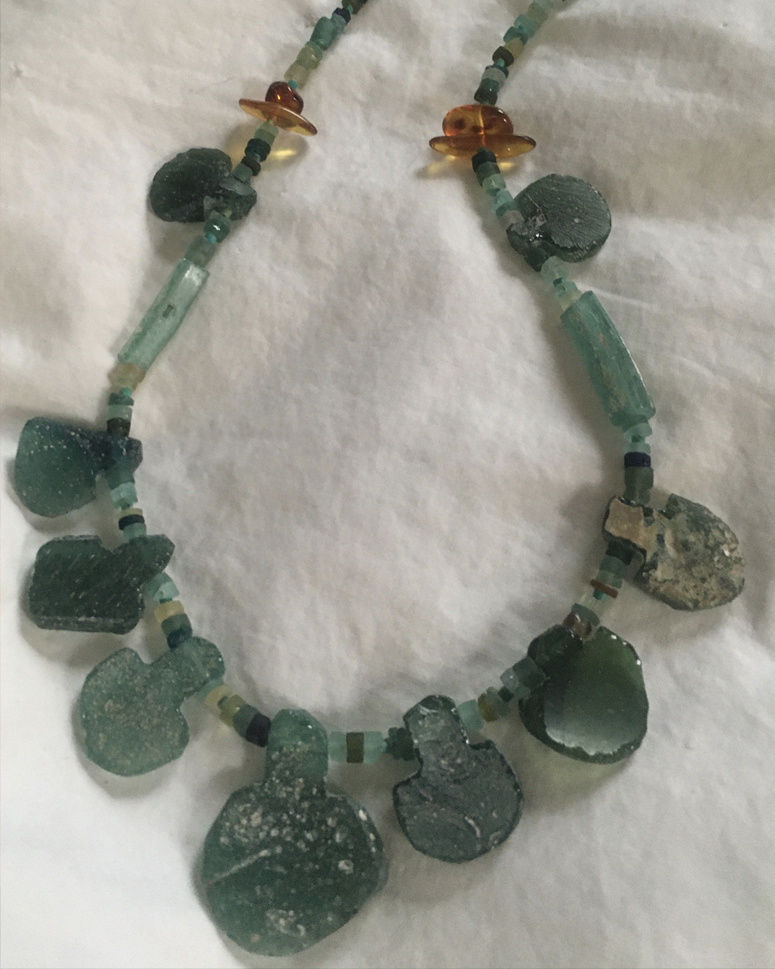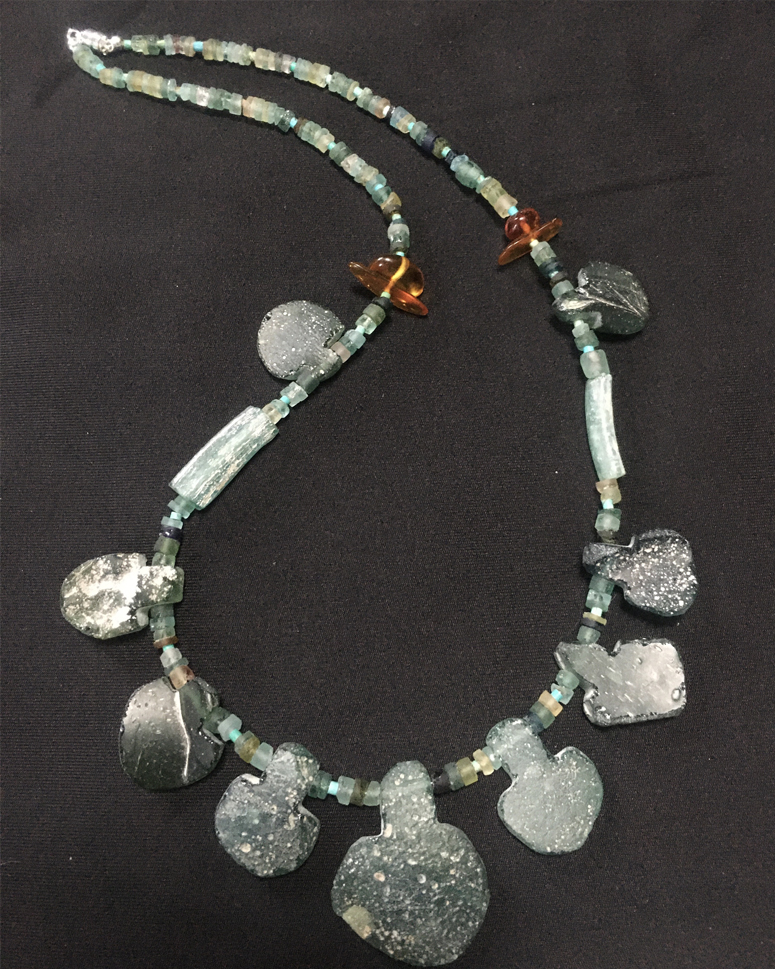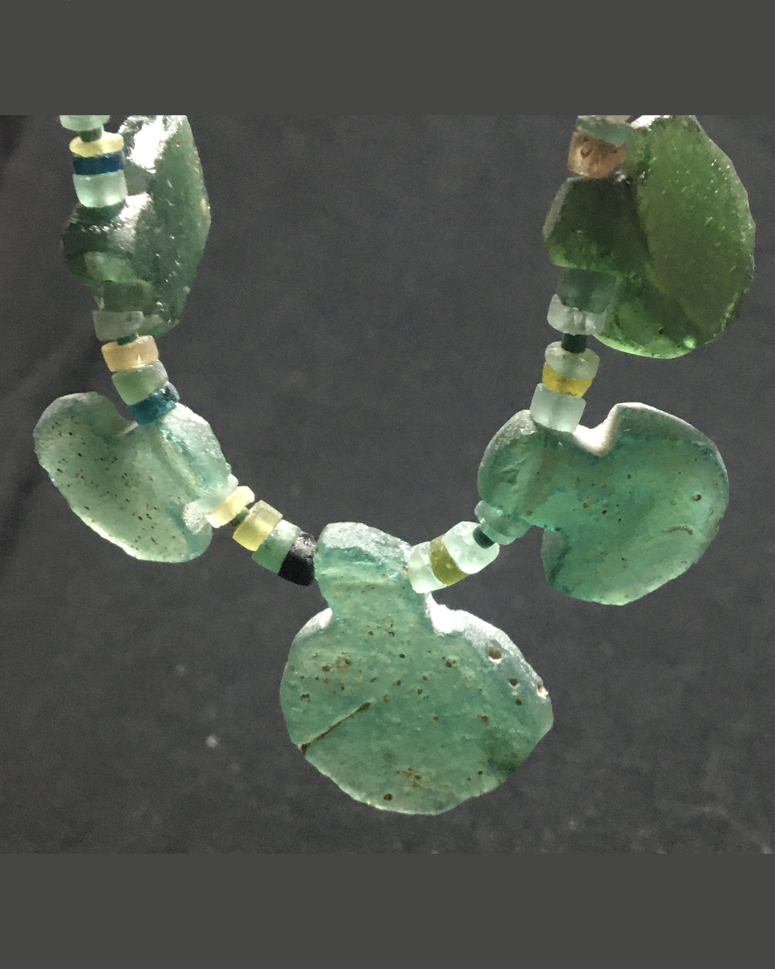Ancient Roman Glass
Ancient Roman Glass Necklace
Artifacts to wear - The ultimate in Recycling!
The making of Roman Glass was a high art, and glass was much prized. Some of the unusual techniques and wide variety of colors are still a mystery to modern science, and it is a lost art.
This glass, from an archaeological dig in the Middle East, has been fashioned into beads, tube beads and pendants. Buried in the soil for 2000 years, the glass pieces have acquired beautiful patinas and irridescence. It is accented with a few beads of Baltic Amber, a gemstone which was valued by the Romans not only for jewelry, but, like the glass, for a variety of useful items.
In its past life, this glass could have been perfume bottles, jars, serving bowls, or even a window. Now the passage of time, nature, archaeology, the luck of discovery, and modern craftsmanship have given it a new life as a unique necklace ... and a fascinating conversation piece.
- 18" necklace
- Sterling Silver Magnet Clasp
- Signed with Quest for Space Hallmark
- Brand: Apple
- Product Code: Product 16
- Reward Points: 60
- Availability: In Stock
- Old Price: $500.00
- Ex Tax: $500.00
- Product Code: Product 16
- Reward Points: 60
- Availability: In Stock
- Old Price: $500.00
- Ex Tax: $500.00
- Ex Tax: $500.00
- Product Code: Product 16
- Reward Points: 60
-
Lorem Ipsum August 28, 2012
Write a Review
Lorem Ipsum is simply dummy text of the printing and typesetting industry. Lorem Ipsum has been the industry's standard dummy text ever since the 1500s, when an unknown printer took a galley of type and scrambled it to make a type specimen book. It has survived not only five centuries, but also the leap into electronic typesetting, remaining essentially unchanged. It was popularised in the 1960s with the release of Letraset sheets containing Lorem Ipsum passages, and more recently with desktop publishing software like Aldus PageMaker including versions of Lorem Ipsum




